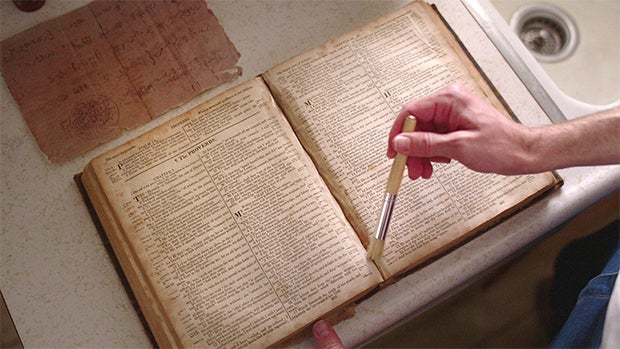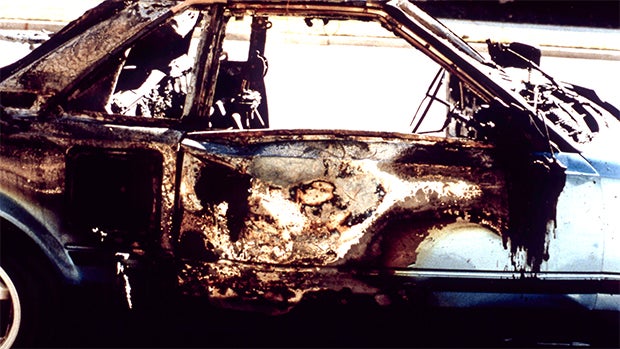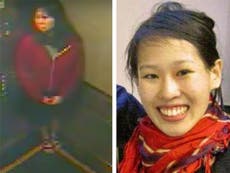Mark Hofmann: The true story of master forger turned bomber from Murder Among the Mormons
Hofmann was one of the world’s most successful forgers before he killed two people in Salt Lake City in Utah in 1985
Your support helps us to tell the story
From reproductive rights to climate change to Big Tech, The Independent is on the ground when the story is developing. Whether it's investigating the financials of Elon Musk's pro-Trump PAC or producing our latest documentary, 'The A Word', which shines a light on the American women fighting for reproductive rights, we know how important it is to parse out the facts from the messaging.
At such a critical moment in US history, we need reporters on the ground. Your donation allows us to keep sending journalists to speak to both sides of the story.
The Independent is trusted by Americans across the entire political spectrum. And unlike many other quality news outlets, we choose not to lock Americans out of our reporting and analysis with paywalls. We believe quality journalism should be available to everyone, paid for by those who can afford it.
Your support makes all the difference.Mark Hofmann, the subject of Netflix’s new documentary, Murder Among the Mormons, was a prolific, master forger turned bomber who was convicted of killing two people in Salt Lake City in 1985.
Now aged 66, he was born in 1954 to a Mormon family in the Utah-based city known as a US hub of the religion.
Despite growing up in the faith and spending two years as a missionary for The Church of Jesus Christ of Latter Day Saints (LDS) in the UK, Hofmann later said he became an atheist when aged 14.
In the 1980s, when he was in his 20s and early 30s, he came known for a series of extraordinary “finds”, including an early translation of the Book of Mormon known as “the Anthon Transcript”, which was assessed to be genuine and fetched him $25,000, and a document that cast doubt on the church’s early leaders and was written up in The New York Times.
One of his most famous forgeries, the Salamander letter, was “discovered” by Hofmann in 1984, and, like many of his forgeries, was intended to cast the religion and its early leaders in an embarrassing light by claiming that Mormon founder and early leader Joseph Smith was interested in the controversial topic of magic.
Hofmann also forged the signatures of many non-Mormon people of note, including presidents George Washington, Abraham Lincoln, John Adams, Andrew Jackson, authors Mark Twain and John Milton and a previously unknown poem by Emily Dickinson.

By 1985 he was negotiating a $1million sale to The Library of Congress for a famous, long missing document from American colonial history, the Oath of a Freeman; the first document printed in the American colonies in 1639 and one of just 50 copies made, none of which had survived.
Despite his successful forgery career, however, Hofmann was in deep debt due to an increasingly lavish life-style and when doubts were cast on his forgery of the Oath of the Freeman in 1985, he began to plan a series of bombings to buy him more time.
On October 15, 1985, he killed document collector and Mormon bishop Steven Christensen in a first explosion, followed by Kathy Sheets, the wife of Christensen’s former employer, in a second blast the same day, leading police to shift their focus onto Sheet’s husband Gary and the impending collapse of his investment business.
Fear spread throughout the city that the bomber was upset with the documents that repeatedly embarrassed the powerful religion.
Salt Lake Tribune reporter Peggy Fletcher Stack wrote: “Watching the three-part Netflix series last week, I was reminded how frightening those days were not only for the whole Salt Lake City community but especially for those immersed in Mormon history — investors, supporters, traders and anyone who had done business with Hofmann. Many associates went into hiding.”
She added: “Some, including me, speculated that the bomber probably was a devout Latter-day Saint who believed that the documents had caused members to lose their faith.”
But when a third bomb accidentally exploded in Hofmann’s car the next day he became the lead suspect and was arrested in January 1986, confessed to second degree murder and the forgeries, and was jailed for life.

In 1987, his wife, Dorie Olds, with whom he had four children and who makes an appearance in the Netflix series, divorced him.
In 1988, he wrote in a letter to the Utah Board of Pardons and Parole: “The most important thing in my mind was to keep from being exposed as a fraud in front of my friends and family”, according toThe Salt Lake Tribune.
“When I say this was the most important thing I mean it literally. I felt I would rather take human life or even my own life rather than to be exposed.”
He later attempted to commit suicide, surviving but losing the use of the arm he used to make forgeries.
The incident was branded a public relations nightmare for the church, prompting a hunt for the dozens of forgeries that fooled some of the greatest auction houses in the world, including Sothebys in the UK.
Author Robert Lindsay, who wrote A Gathering of Saints: A True Story of Money, Murder and Deceit in 1988, said that Hofmann “stimulated a burst of historical inquiry….[into the church that] did not wither after his conviction”.
The three part Netflix series was directed by Tyler Measom and Jared Hess, who were both brought up in the Mormon faith.
Mr Hess, who directed Napoleon Dynamite, told TIME that he was moved to make the film after realising that the story had mostly stayed local to Utah.
“I think that people who come into the series cold are shocked at how prolific Mark Hofmann was and that he was the greatest forger of all time,” he said.
Mr Measom said that Mr Hofmann declined multiple requests for interview.
“Mark has kept his secrets to himself,” he told TIME. I think that’s all he has, frankly. He’s sitting in jail with very little chance of ever getting out. So the one thing he has is the power to wield his story.”
He added: “I’d like to understand what caused him to use his powers for evil, as opposed to good. Was there ever a time when he thought, maybe I can work for the FBI and be a document examiner, instead of a document forger? That crux, or that fork in the road, is always interesting, especially in filmmaking: why someone becomes a superhero versus a super villain.”
Subscribe to Independent Premium to bookmark this article
Want to bookmark your favourite articles and stories to read or reference later? Start your Independent Premium subscription today.



Join our commenting forum
Join thought-provoking conversations, follow other Independent readers and see their replies
Comments